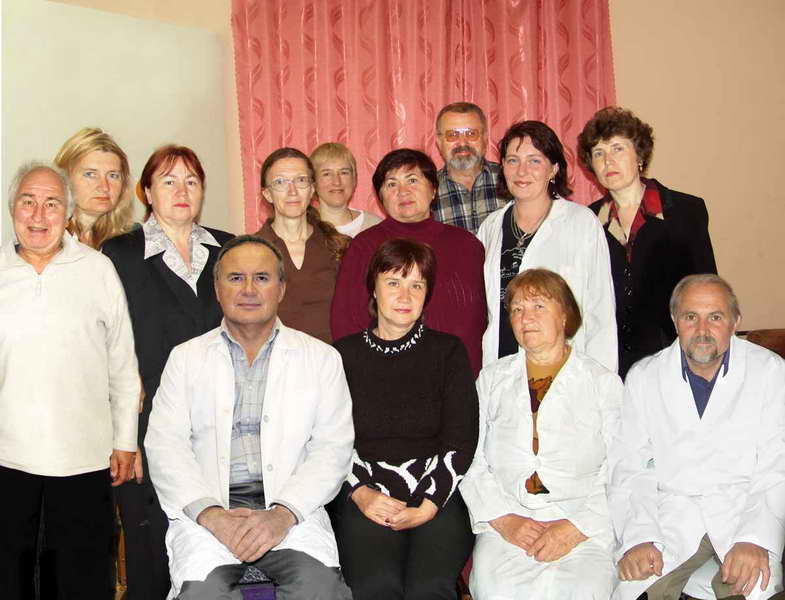The Laboratory was founded in 1960 by Prof. N. A. Rokotova. The direction of research during the first years was a study of effects of a long-term restriction of the motor activity on the organism functioning. As an object of the study, monkeys were used. Based on the studies performed, a conclusion was made, which was important for the space physiology started to develop at that time, that the prolonged restriction of the motor activity produced no essential disturbances in functioning of the main systems of the organism.
 Subsequently the investigation at the Laboratory was focused on of the spatial-temporal organization of human movements. Tracing movements of the man, activity of the operator at the control panel, aiming hand movements were studied. A significant theoretical achievement at this period was development of a concept of the principle of activity of the brain as of a system controlling its own executive devices and controlled via sensory inputs. Subsequently the investigation at the Laboratory was focused on of the spatial-temporal organization of human movements. Tracing movements of the man, activity of the operator at the control panel, aiming hand movements were studied. A significant theoretical achievement at this period was development of a concept of the principle of activity of the brain as of a system controlling its own executive devices and controlled via sensory inputs.
In 1977–1995 the Laboratory was headed by Prof. Yu. T. Shapkov. At this period, problems of the sensory basis of movements were analyzed. Interrelations of mechanisms of the programmed control of movements and mechanisms of sensory corrections were studied. There were studied central mechanisms of processing of proprioceptive information and organization of motor commands, role of kinesthetic image in regulation of temporary, spatial and strength characteristics of movement. The achievements of the Laboratory at this time consisted in a systematic study of the muscle contraction postactivational potentiation, proposal of a new classification of muscle receptors and a new scientific concept of different role of the proprioceptive feedback signals in regulation of acquired and learned movements.
Since 1995, the head of the Laboratory is Biological Science Doctor Yu. P. Gerasimenko. The current research of the Laboratory deals with studies on adaptive spinal cord mechanisms in the motor control of movements. In clinical studies on patients with spinal cord lesions it has been proven that in man, like in other mammals, the spinal cord contains generators of walking movements – the neuronal networks producing the coordinated motor activity. Reflex mechanisms are identified that are specific of flexor and extensor muscles during formation of the walking movements produced by spinal cord electrostimulation. Conditions of initiation of the walking generator activity are formulated and a scientifically substantiated concept of rehabilitation of spinal patients is proposed. At present there are studied regularities of control of the walking generators by an epidural spinal cord stimulation combined with a peripheral stimulation of foot proprioreceptors.
In acute experiments on decerebrated and spinal cats, reflex and intracentral mechanisms are studied which provide the appearance of locomotor activity during the spinal cord epidural stimulation. It has been shown that the walking generator can be activated by two ways: through the spinal-bulbar-spinal loop by stimulating the propriospinal system and through dorsal roots and dorsolateral funiculi by epidural stimulation of rostral segments of lumbar intumescence. In chronic experiments on spinal cats and rats, evidence is obtained for a possibility of control of structural-functional readjustments in the « isolated » spinal cord by epidural stimulation and regular running wheel training. Such combined action restores the spinal cord motor function much more rapidly.
Morphofunctional studies have shown that motoneurons of an isolated spinal cord part of rats trained regularly on the running wheel remain viable in contrast to motoneurons of non-trained spinal animals.
In analyzing mechanisms of postural reactions aimed at maintaining vertical position, effects of tracing eye movements and sound stimuli of various localization on the balance maintenance have been studied. The tracing eye movements were shown to decrease the correlation between fluctuation of the pelvic-femoral joint and the pressure center, while solution of the task of the sound source localization led a decrease of amplitude of the pressure center fluctuations and its shift to the left and forward regardless of the sound source position. Modeling of the balance maintenance processes during the quiet standing showed the stabilization systems of frontal and sagittal planes to have the same structure of control laws. The obtained data confirm the suggestion that the cause of fluctuations of the mass center trajectory is not random internal actions, but the dynamic stability of the trajectory of these fluctuations, which is realized based on the non-linear control laws.
Thus, at present the scientific interest of the laboratory are connected with studies on spinal mechanisms of locomotion regulation and the intersensory interactions providing the vertical posture maintenance. |